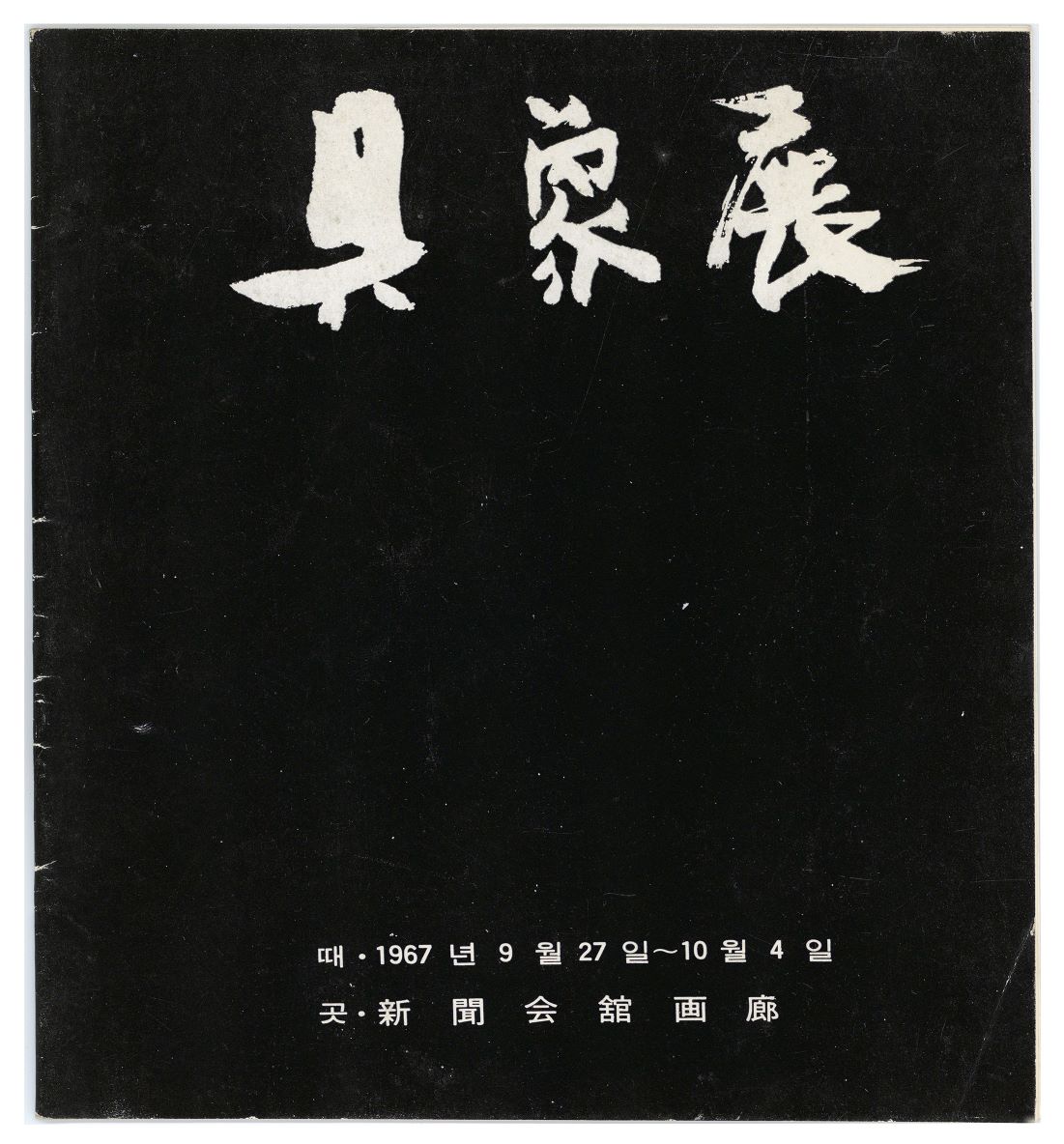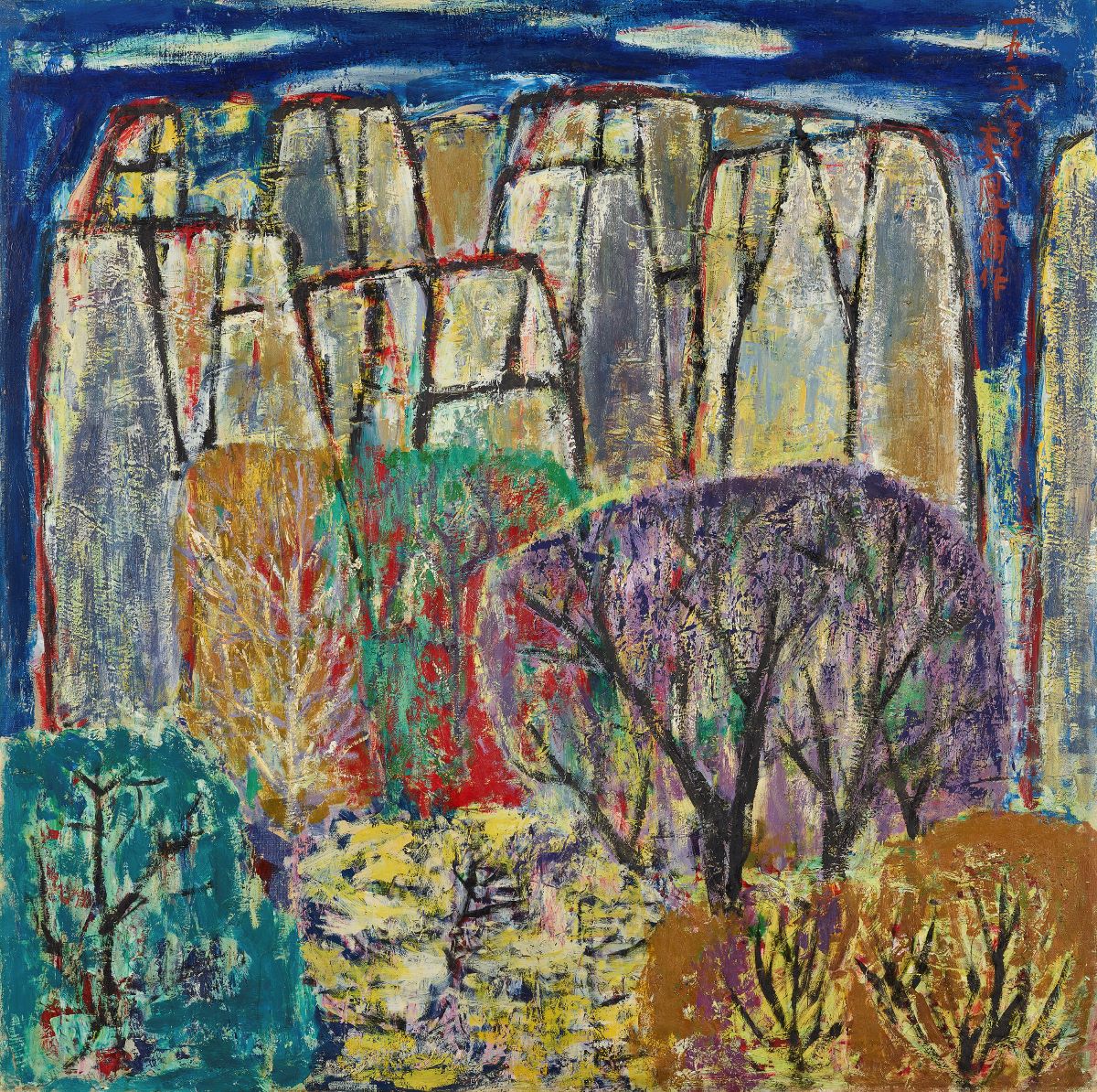
The First Figurative Art Exhibition, Invitation, 1967, MMCA Art Research Center Collection
Exhibition of Gusangjeon
* Source: MMCA
Related
-

Semi-abstract
The term semi-abstraction refers to a painting that combines abstract and figurative painting styles together. Lee Ungno used the term in a different local context in relation to his work. In his book Appreciation and Technique of Eastern-style Painting (1956), Lee argues that semi-abstraction describes an artistic technique based on sketching from nature, which also further attempts to express an abstract atmosphere to better emphasize the author’s conceptual intentions. The concept was officially used in Korea at the 1961 Grand Art Exhibition of Korea to distinguish three divisions: western painting, semi-abstract work, and abstract work.
-
Figurative art
Figurative art refers to a style that depicts objects, both real and imaginary, in a realistic manner. It became popularized within Western Art in parallel with the emergence of Modernist abstract art during the early 20th century. In the Korean art community, discourses on figurative art began when the Western Art division of National Art Exhibition (Gukjeon) was separated into the figurative, semi-abstract, and abstract categories in 1961. In 1969 the Western Art division of the Grand Art Exhibition was reorganized into the figurative and non-figurative categories. At this point the idea of figurative art was established within the Korean art community to primarily refer to painting and sculpture created in an Academic realist style.
Find More
-

Chung Kyu
Chung Kyu (1923-1971) was born in Goseong, Gangwon-do. He graduated from Gyeonggi Public Commercial School in 1941 and moved to Japan to attend the Department of Western Painting at Teikoku Art School. He returned to Korea in 1944 and stayed in Busan during the Korean War, moving to Seoul to be a researcher at the Korean Visual Art Research Institute from 1954 to 1962. He studied prints and ceramics in Rochester, New York, USA on a one-year invitation from the Rockefeller Foundation. After he came back, he expanded his art from painting to prints and ceramics. He was a founding member of the Korea Art Critics Association in 1956, the Korea Prints Association [Hanguk panhwa hyeophoe] in 1958, and the Korean Art Critics Association in 1960. He established the Institute of Korean Traditional Ceramics Craft in 1960. He contributed his prints to the Contemporary Art Exhibit sponsored by Chosun Ilbo and created ceramic murals at Oyang Building and Namsan Liberty Center, leaving an important mark on the development of public art in Korea. He worked as an art lecturer at Ewha Woman’s University from 1955 to 1961, at the department of craft, Hongik University from 1960 to 1963, and as a professor of the Department of Ceramics at Kyung Hee University from 1963 to 1971.
-

Lee Bongsang
Lee Bongsang (1916-1970, pen name Seokjeong) graduated from the Training Department at Gyeongseong Normal School in 1937. Self-taught in painting, Lee received his first honorable mention at the eighth Joseon Art Exhibition [Joseon misul jeollamhoe] in 1929 at the age of thirteen. He went on to receive honorable mentions and win special prizes, coming to prominence as a painter. He later moved to Japan and during his stay there his work was selected for the Ministry of Education Art Exhibition [Monbusho bijutsu tenrankai]. In 1942, together with Japanese artists active in Seoul, he founded the artist group named Changnyongsa. After Korea’s liberation from Japan, Lee participated in the founding of several artists’ groups, such as the 1950 Art Association, Gijojeon, Sinsanghoe, and Gusanghoe. He was also at the forefront of fostering later generations through the compilation of textbooks and criticism. His early works reflected impressionist realism. In the 1950s, however, he turned to a painting style characterized by bold compositions, bright colors, and a rough brushwork, which he developed through his association with Kim Whanki, Yoo Youngkuk, Kim Byungki, and Park Kosuk. From 1953 he worked as a professor at Hongik University, and from the year 1954 he was invited to participate in the National Art Exhibition (Gukjeon) as a recommended artist, invited artist, and judge.






